“A Beginner’s Guide to Architecture” is a historical narrative that explores the architectural styles in Europe. The article takes a chronological approach, starting with the classic architectural styles of Ancient Egypt, Ancient Greece, and the Roman Empire. And concluding with Neoclassicism. This comprehensive guide is designed for individuals interested in history and architecture, regardless of your background knowledge.
The article primarily focuses on West European architectural styles to provide a solid understanding of architectural history. By using famous monuments as examples and incorporating pictures, the guide enhances comprehension and appreciation of our built environment. It also sheds light on the cultural background and surroundings that shape our society.
Please enjoy “A Beginner’s Guide to Architecture.” To facilitate navigation, a table of contents is provided for easy referencing and the ability to skip sections according to personal interest.
This post contains affiliate links. Rest assured, it won’t cost you anything extra. By clicking the link, I may earn a small commission, which helps to keep this website running and provide you with valuable travel information and inspiration.
Table of Contents
Ancient Egypt
3200-30 BC
The Ancient Egyptian civilization achieved impressive accomplishments through the development of sophisticated irrigation systems. These systems showcased their ability to adapt to the unique conditions of the Nile River. In turn, this contributed to an increase in agricultural productivity. The increase of productivity ensured a sufficient food supply to sustain the growing population. Additionally, it fostered social and cultural advancements in the region.
The mastaba is an early example of Ancient Egyptian architecture. It was initially constructed using brick and later the Egyptians used stone. It embodied their belief in the temporary nature of physical life and the everlasting nature of the spiritual realm. To withstand the test of time, tombs and temples were meticulously built as eternal gateways to the afterlife and as sacred abodes for the gods.
Pyramids of Giza
Egypt is renowned for its majestic pyramids. The Giza pyramids are one of the magnificent Seven Wonders of the Ancient World. These ancient structures proudly endure to this day, serving as the remaining wonder of antiquity. The pyramids were initially created as tombs for the Royal Family. Later generations created the construction of smaller pyramids. These smaller pyramids were the final resting places for private families.
The construction of the pyramids involved the use of ramps to elevate the stone blocks. As the pyramid size increased, so did the length of the required ramp. Once the pyramid was completed, the ramps were dismantled (see images below).

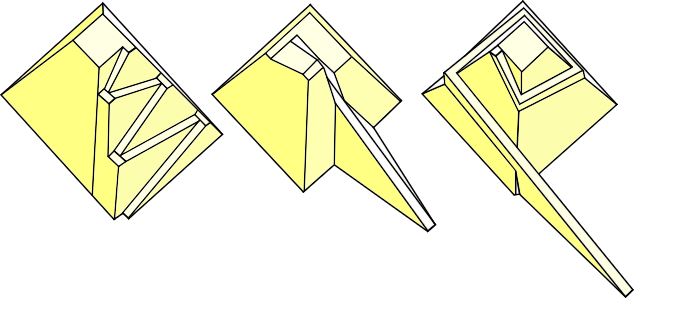
Another remarkable architectural marvel from ancient Egypt is the Luxor Temple. This temple complex, built around 1392 BC, holds great historical significance. Throughout the Christian era, the temple underwent a transformation into a Christian Church. In time the complex was buried beneath the bustling streets and houses of Luxor. In later years, a mosque was constructed on top of the buried temple. Remarkably, when the underground temple was discovered, the mosque was also preserved. Today, both components intertwine as an inseparable part of this historical monumental site.
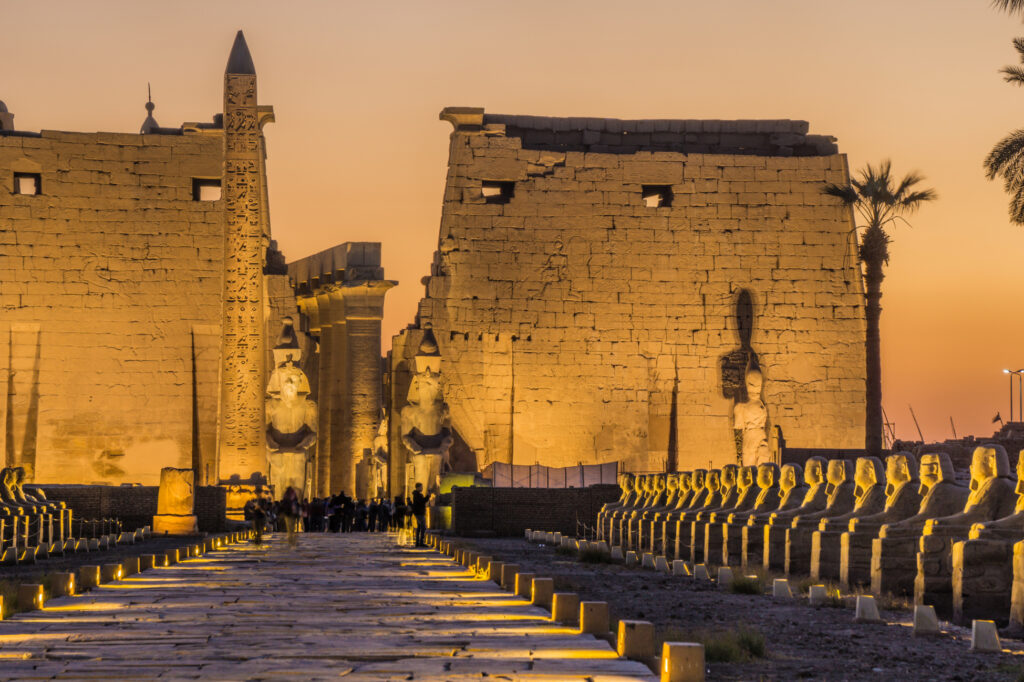
Ancient Middle East
Babylon
2000-320 BC
The region we now know as the Middle East has a rich history dating back to around 3000 BC. At that time the ancient civilizations and religions were flourishing. The city of Babylon, established around 2000 BC, gained widespread fame and recognition. It is believed that Babylon held the distinguished title of being the world’s largest city during two distinct periods: approximately from 1770 to 1670 BC and again from 612 to 320 BC.
Situated around 90 kilometers southwest of present-day Baghdad, the remnants of Babylon continue to mesmerize and fascinate. Its ruins showcase remarkable features, including grand palaces and the legendary Hanging Gardens, renowned as one of the Seven Wonders of the Ancient World. This masterpiece of horticultural ingenuity was ingeniously designed as a series of ascending terraces, including an amazing variety of trees and vines. While historians are still uncertain about the exact location of these legendary gardens, their search and speculation persist, contributing to our ongoing exploration of this captivating place.
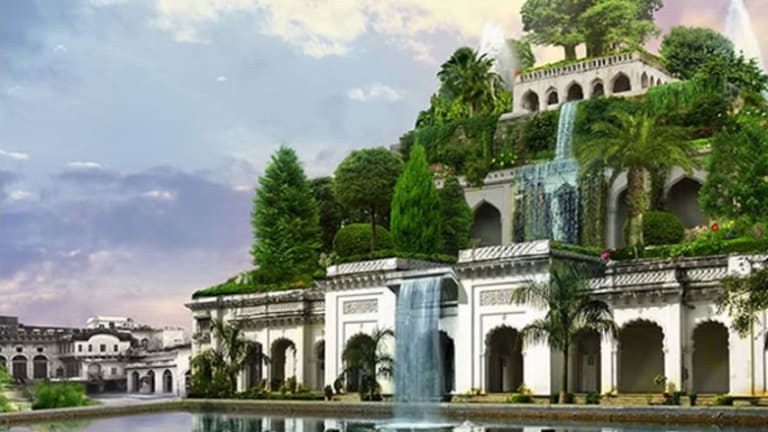
Babylon, the ancient capital of the Mesopotamian world, is located in what is now Iraq. Mesopotamia saw the rise of cities, cobblestone streets, palaces, and temples. Its culture flourished even before the grand civilizations of Egypt, Greece, and Rome.
Ancient Greece
Ancient Greek architecture continues to influence modern government buildings, monuments, and various structures. The distinct features of tall columns and symmetrical designs define this architectural style. Temples were particularly prominent during that era, serving as sacred dwellings for gods. Each region and local community developed their own unique styles and forms, contributing to the overall diversity of Ancient Greek architecture.
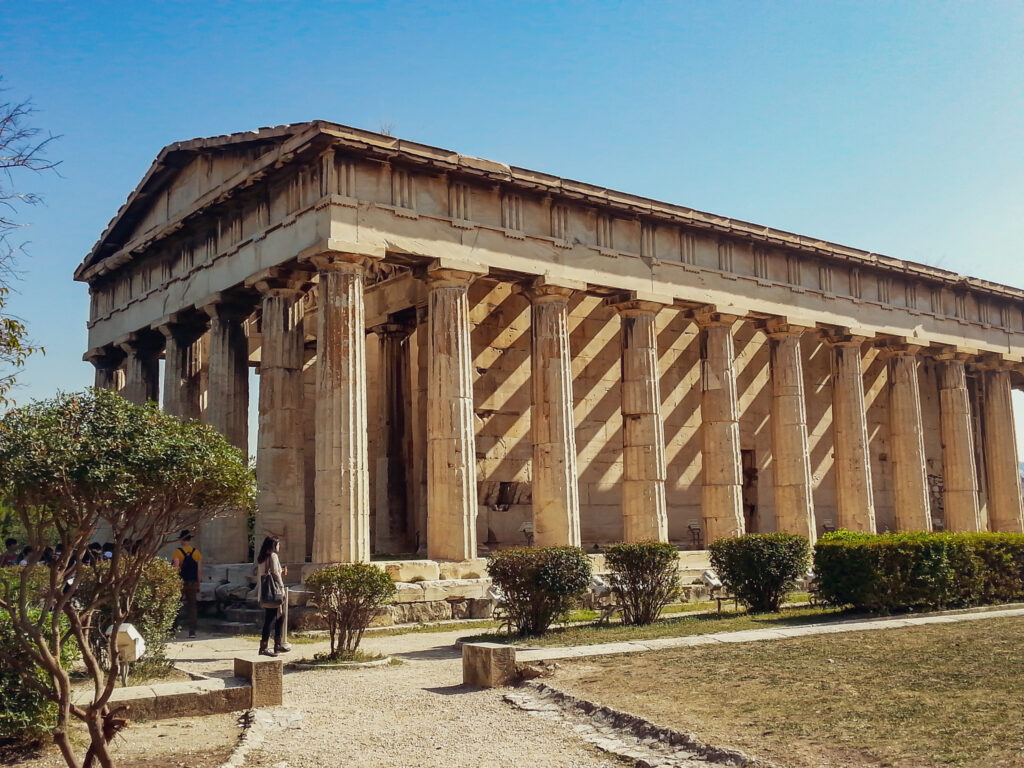
Temples
During the 7th century BC, the fundamental design of Greek temples was established and persisted for centuries. The Greeks pursued perfection and relied on mathematical principles in their architecture. It is plausible that the ideas of Greek philosopher Pythagoras influenced their artistic vision.
The basic design of most Ancient Greek temples was characterized by simplicity. The temple’s exterior was encircled by columns, with panels situated above these columns on both the front and back facades. These decorative panels, known as friezes, were topped by pediments, typically triangular in shape, decorated with sculptures and motifs. Within the temple, a chamber housed the specific deity’s statue for whom the temple was dedicated.
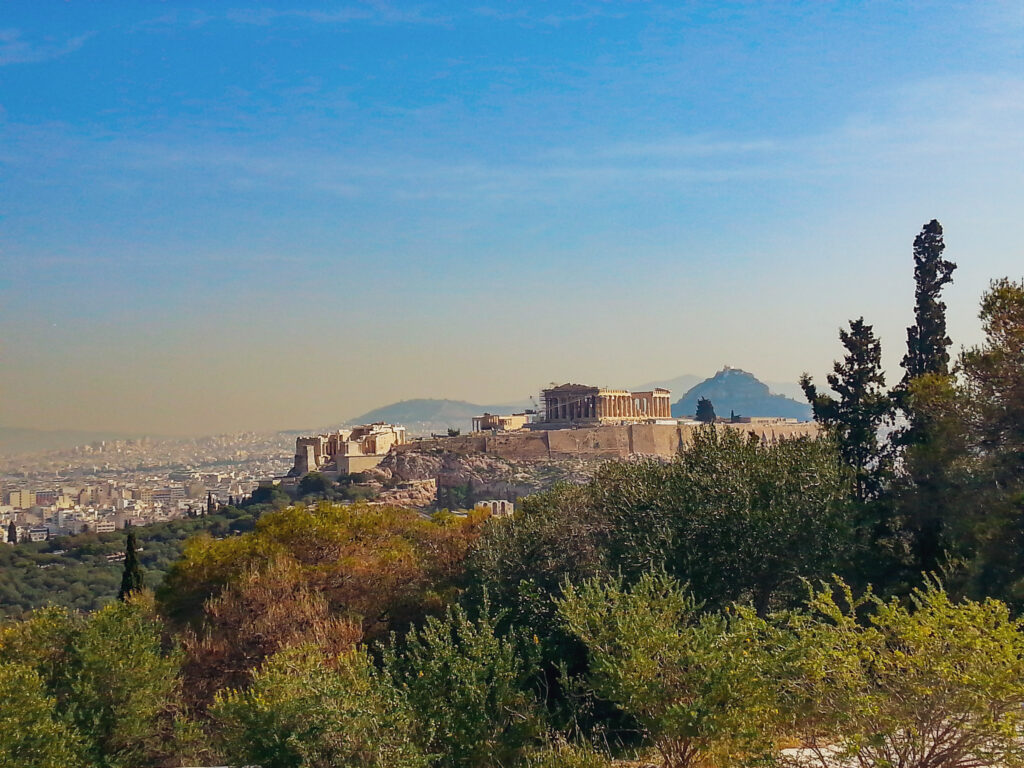
The Acropolis of Athens is home to the renowned Ancient Greek temple, known as the Parthenon, among other historically significant buildings. Constructed between 447-438 BC, this temple, built in the architectural Doric style, is a dedication to the patroness of Athens, the Goddess Athena.
Greek Columns
A significant feature of Ancient Greek architecture is the implementation of columns, known as orders. The three recognized column styles are the Doric, Ionic, and Corinthian.
Doric order – The Doric columns possess a simplistic design with no base decoration. These columns are wider at the base and taper towards the top. The Doric order enjoyed great popularity during the 5th century BC and was also adopted by the Romans in their architectural style.
Ionic order – Developed around the same time as the Doric columns, the Ionic order was less favored in comparison. These columns are slender and positioned on a base. The capital features two scrolls, one on each side.
Corinthian order – Renowned for its intricate and ornamental features, the Corinthian order is the most elaborate of the three. The capital is decorated with acanthus leaves, scrolls, and lotus motifs. The Corinthian order gained immense popularity and became a preferred choice for the Romans.
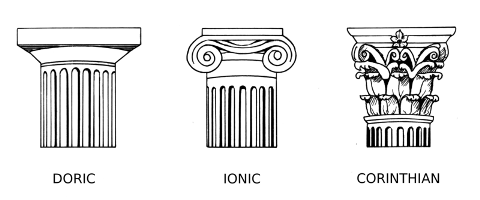
Mausoleums
Death and funerals held significant importance in Ancient Greece. Tombstones were commonly used as markers for grave sites. During the Hellenistic period (between the death of Alexander the Great in 323BC and the rise of the Roman Empire in 31BC), architects and craftsmen were commissioned to construct larger tombstones and mausoleums. These structures were designed to imitate temples. The mausoleum as we know it today being derivative of the grave of King Mausolos in Halicarnassus. Although destroyed in the 16th century, his mausoleum was considered one of the seven World Wonders by historians. Decorated with sculptures of lions, horses, men, and various other animals, the building exemplified grandeur and artistry.
Other Ancient structures we use today
Theatres: Historians hypothesize that theatres emerged between the 6th and 5th century BC. The theatres were initially intended for dance performances. Eventually, comedy and tragedy took the stage, gaining popularity in subsequent decades.
Agora: An open square is known as an agora. These places held significant importance in Ancient Greece as a hub for social interaction and economic activity. Interestingly, the term “agora” still finds usage in certain European languages, like Flemish.
Gymnasia: In modern day, we refer to them as gyms. In Ancient Greece, gymnasia served as outdoor spaces for men to engage in physical exercise.
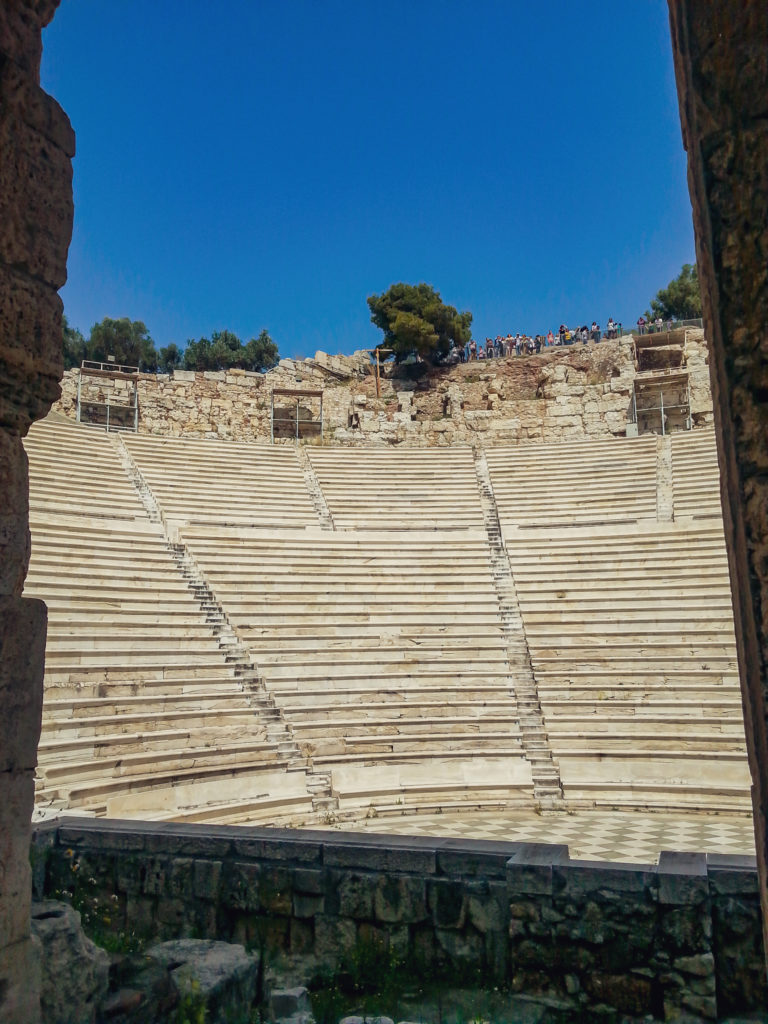
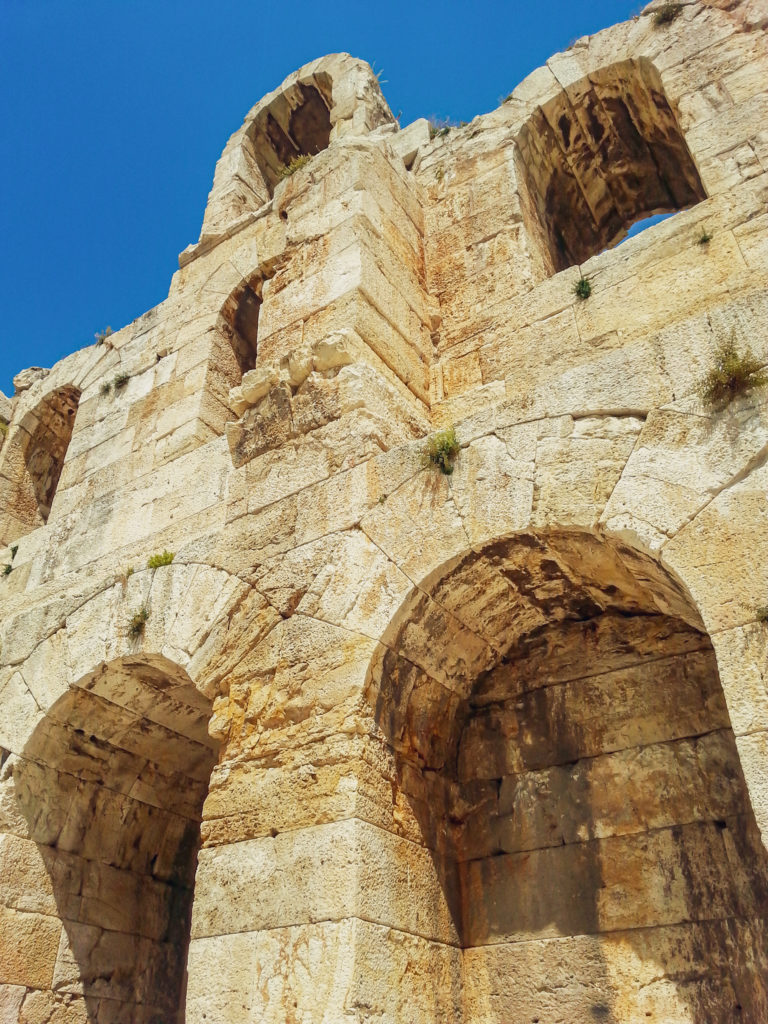
Roman Empire
753 BC – 476 AD
Ancient Rome originated as a small settlement dating back to 753 BC. The Roman Empire takes its name from the city of Rome (Roma in Latin and Italian). This small settlement grew to become one of the most expansive empires in the ancient world. Over the course of centuries, Ancient Rome achieved remarkable features in architecture and technology. They constructed an extensive network of roads, aqueducts, monumental structures, public facilities, palaces, and churches. Among the notable landmarks in Rome is the famous Colosseum.
Colosseum
The Colosseum, situated at the heart of Rome, was built in an oval shape between 70-80 AD by Vespasian. The construction of the Colosseum served as a generous gift to the city. It was the largest structure ever constructed during that era. The Colosseum is a uniquely significant historical artifact, even today. Initially, the amphitheatre hosted gladiator fights, animal hunts, and executions. These cruel displays were prohibited during the 6th century due to their barbarous nature. The Colosseum underwent a transformation into a castle during the Middle Ages. In later centuries, the building fulfilled multiple roles, such as housing workshops and as a fortress.
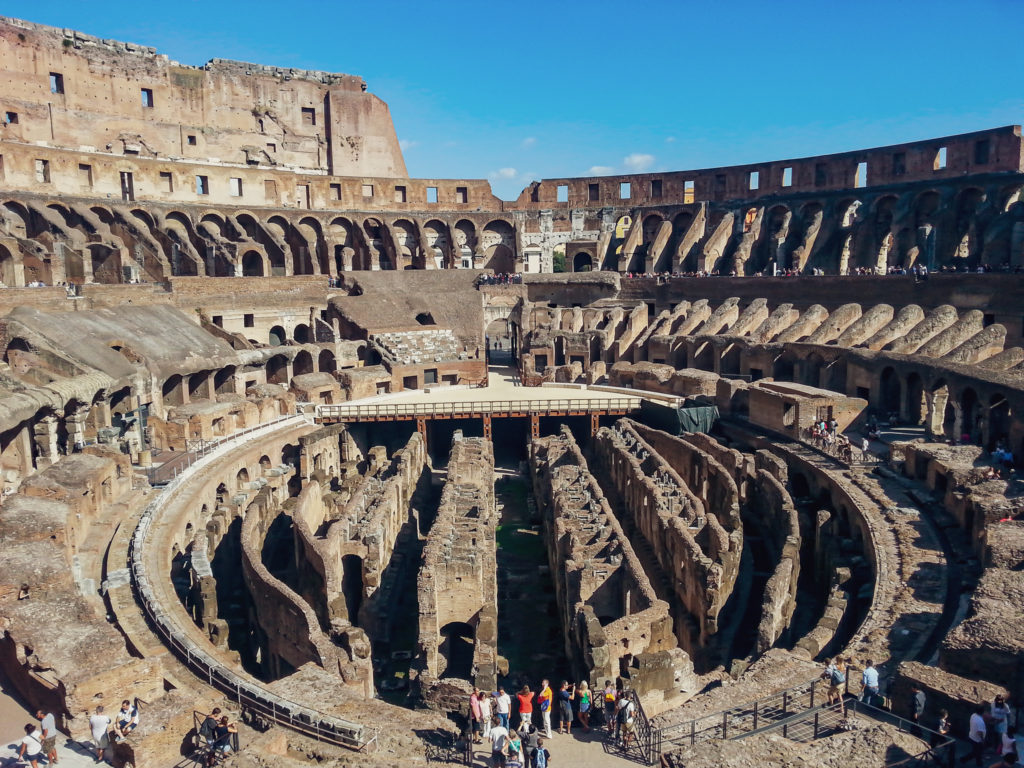
Pantheon
The Pantheon is believed to have been constructed around 118-128 AC. It is built on the precise location of an earlier temple dedicated to all Gods. The reason behind Marcus Agrippa’s decision to build the Pantheon on the same spot as the temple remains unknown. Another intriguing aspect is the distinctive inscription above the entrance. Remarkably preserved, the Pantheon showcases a stunning interior design. The innovative use of concrete by Agrippa enabled the construction of a colossal dome, a feature unparalleled until the Renaissance era. Positioned at the center of the dome is a central opening known as the oculus.
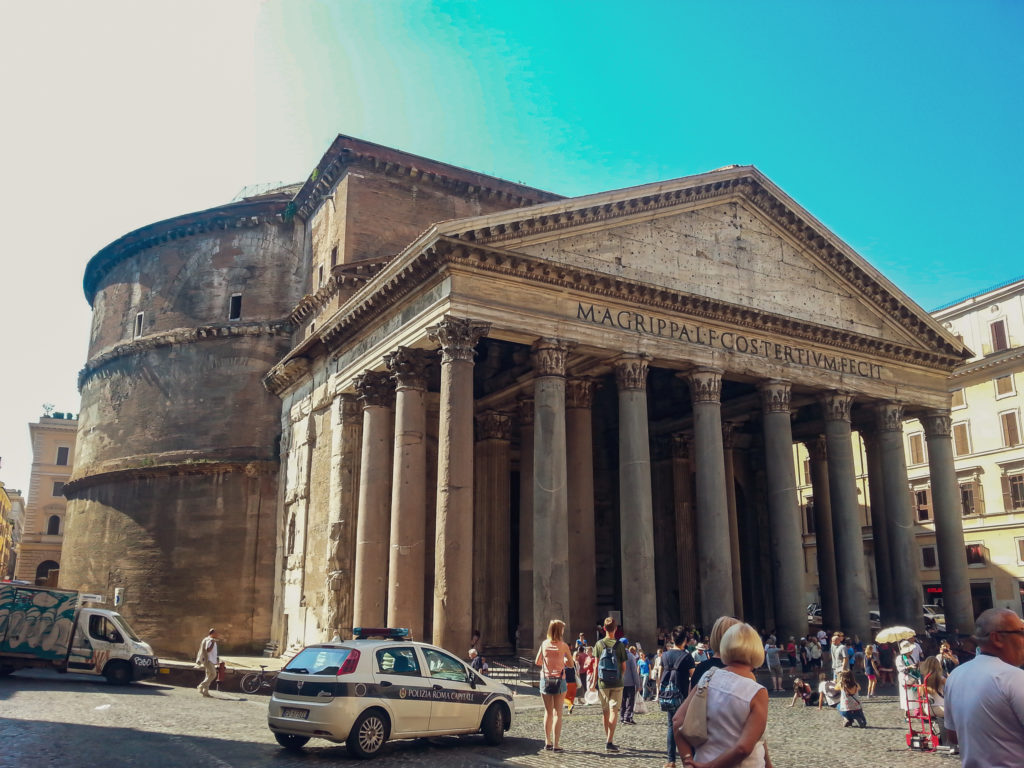
Byzantium and Christian East
313-1453 AC
Christianity was officially recognized in the year 313 by Constantin I, the Emperor of Rome. In 326, it was declared as the official religion of the Roman Empire. The city of Byzantium was renamed Constantinople, which is now known as Istanbul in Turkey. Notably, the Roman Empire expanded westward to Cologne, eastward to Syria, and southward towards Greece and Egypt.
Basilica
A new architectural form was developed, the basilica. It became the most renowned example of distinctive Roman architecture. Its rectangular shape made it ideal for markets, events, and as a courthouse. Within the basilica, there was a division into the nave, transept, entrance at the front, and a sanctuary at the back. The nave serves as the central part of a church or basilica, while the transept consists of halls or areas that intersect the nave. When viewed on a map, the combination of the nave and transept form the shape of a cross.
Mausoleums and chapels
Early Christian architecture imitated Roman buildings. They copied centralized floor plans such as circles, crosses, and multangular shapes. These designs were commonly used in mausoleums. Initially, sacred sites were situated within churches, but over time, they gained independence. They constructed separate buildings, such as mausoleums and chapels. In later centuries, the utilization of centralized floor plans remained prevalent in church development.
Byzantium
In 395, the Roman Empire underwent a division. Therefor paving the way for the rise of the Byzantine Empire in the east, which reached its zenith in the 6th century. Meanwhile, the western part of the Roman Empire faced numerous threats. Constantinople emerged as a prominent political and cultural hub within the Byzantine Empire. In the east, a preference for centralized square bays, domes, and arches was evident. In the west, basilicas were constructed and favoured.
Basilica of the Hagia Sophia, Istanbul
The Hagia Sophia is widely regarded as the paramount Byzantine architectural masterpiece. Erected in 537, this basilica stands on the site of its predecessor, shares its name, and merges two distinct architectural styles. It combines the cross-shaped nave and aisles of a basilica with the oval shape of the Byzantine architectural dome. The dome itself has an impressive diameter of 32.6 meters, a remarkable feature accomplished in the 6th century. Unfortunately, several earthquakes led to cracks in the main dome, causing its collapse just 20 years later in 558. However, the dome was successfully reconstructed in 563.
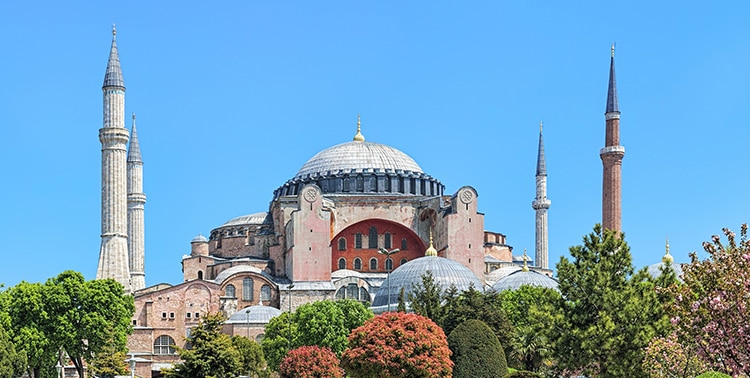
Basilica of Saint Mark, Venice
The period from 843 to 1204 is commonly referred to as the Middle Byzantine era. During this time, the Macedonians gained control over parts of Greece and Italy. They established significant influence in Italy while maintaining diplomatic and commercial relations with Constantinople. The western church adopted certain elements from the Orthodox Church. One example in the architectural design of the Saint Mark Basilica in Venice. This Romanesque-style structure combines early Christian traditions with Orthodox influences. It features a grand west facade constructed in the 11th century and adorned with decorative elements added in the 19th century. Furthermore, the plan of the basilica, shaped like a Latin cross, reflects the Byzantine history of the city.
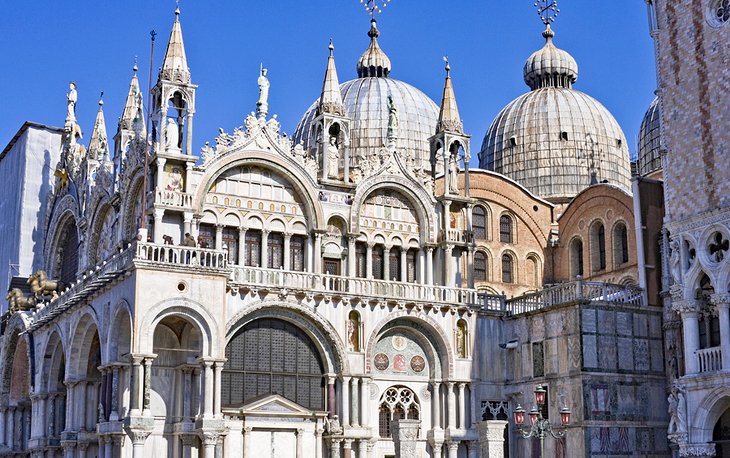
Romanesque
1000-1200 AC
The Romanesque style is sometimes referred to as Roman, but it should not be mistaken for Ancient Roman.
The architectural style of the 11th and 12th century came to be known as Romanesque in the 19th century. Influenced by Ancient Roman architecture, it brought forth a renewed allure. Prominent features include barrel vaults and the endeavor to construct wider spans using stone, a practice not seen since classical Roman times. This eventually paved the way for the development of rib vaults in the early 13th century. Additional characteristics are round arches, various vault structures, elaborate ornamentation, and the inclusion of towers. Each element was meticulously implemented or constructed in distinctive ways.
Canterbury Cathedral
The Romanesque architectural style known as Norman was prominent in England during the 11th and 12th centuries. It emerged following William the Conqueror’s victory at Hastings in 1066, bringing forth a new era of art and architecture. The significance of military and religious influence cannot be understated. Castles and churches gained prominence during this period. There was a considerable expansion in the size and grandeur of churches and cathedrals, rivaling those found in mainland Europe. One illustrious example of this is the Canterbury Cathedral.
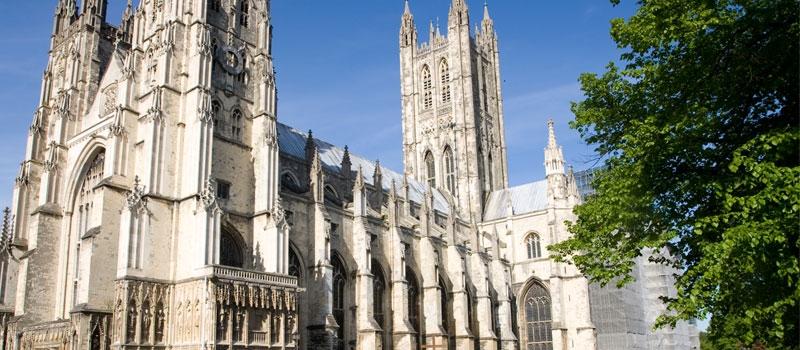
Cathedral Santiago de Compostela
The Romanesque architecture in Spain embodies a unique blend of diverse traditions. The prolonged Moorish occupation of Spain left its mark with the fusion of Christian and Islamic styles during the 11th and 12th centuries. The Spanish Romanesque style is primarily observed along the renowned pilgrims’ route to Santiago de Compostela, with the captivating Cathedral of Santiago de Compostela standing as its glorious pinnacle.

Cathedral of Pisa.
The Tuscan cities of Florence, Lucca, and Pisa cultivated their distinctive architectural styles, combining Byzantine techniques of mosaic and marble with Ancient Roman floorplans. A noteworthy demonstration of these mixed styles can be observed in the Duomo di Pisa. Its western façade showcases four tiers of diverse marble colonnades, exuding a characteristic Pisa-Romanesque aesthetic.
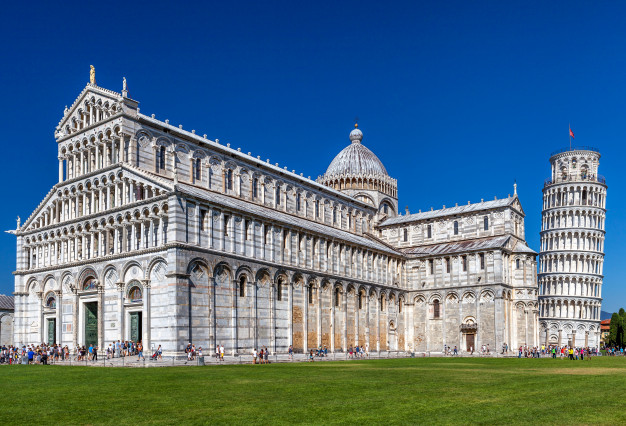
Gothic
1140-1530
French Gothic
The early French Gothic architectural style is characterized by rib vaults, pointed arches, and flying buttresses. These elements were borrowed from Ancient Roman architecture, although never used simultaneously. This unique combination emerged in France during the mid-12th century, marking the dominance of Gothic style in European architecture for 350 years. Notably, there was an emphasis on verticality and a reduced use of stone materials for walls. The incorporation of larger coloured glass windows allowed for an influx of natural light into buildings.
As the Gothic style evolved, these elements underwent improvements, modifications, and adjustments. During the high Gothic period, a new decorative element known as the tracery pattern was introduced. This flamboyant style embraced an abundance of decoration, while its influence on interior design remained limited.
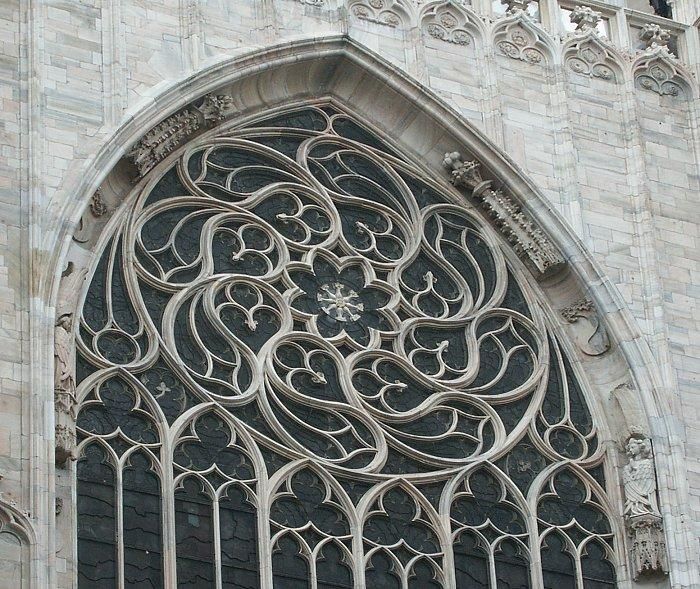
Notre Dame Paris
The Notre Dame cathedral is regarded as one of the most remarkable illustrations of French Gothic architecture in Paris. It serves as a pioneering example of the application of flying buttresses and rib vaults. Notably captivating are the massive rose windows decorated with vibrant stained glass. The cathedral gained widespread fame following Victor Hugo’s publication of the novel, The Hunchback of Notre-Dame in 1831. This surge in popularity prompted a series of renovations between 1844 and 1864.
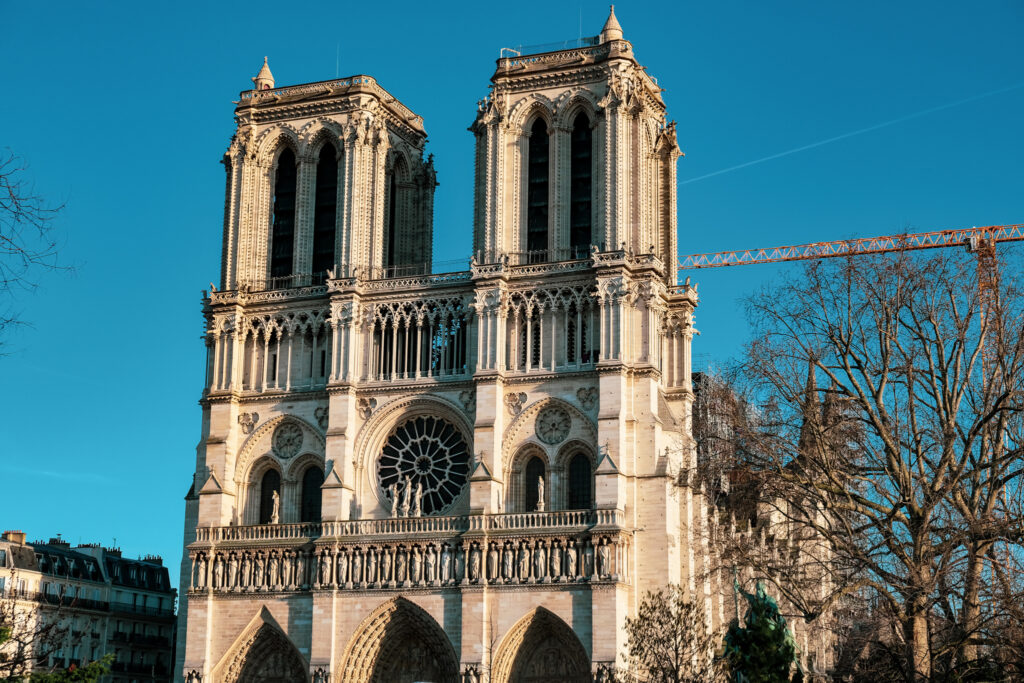
English Gothic
The English Gothic architectural style can be divided into three phases: early English, Decorated, and Perpendicular. The Decorated Gothic period, which was prevalent in England from 1290 to 1350, was characterized by its abundant decoration and ornate structural shapes. This period exhibited a wide range of applied ornaments, showcasing the richness and diversity of the style.
Westminster Abbey
Westminster Abbey serves as a renowned example of English Gothic architecture. While not entirely Gothic in its entirety, its main section exemplifies this distinct style. Considered one of the most prominent churches in the UK, it has a fascinating history. Originally constructed in the Romanesque style, the church was completed in 1060. However, it was later rebuilt in an Anglo-French Gothic style, commencing construction in 1245 under the patronage of Henry III. Subsequently, Henry VII introduced a Perpendicular style chapel dedicated to the Virgin Mary in 1503.
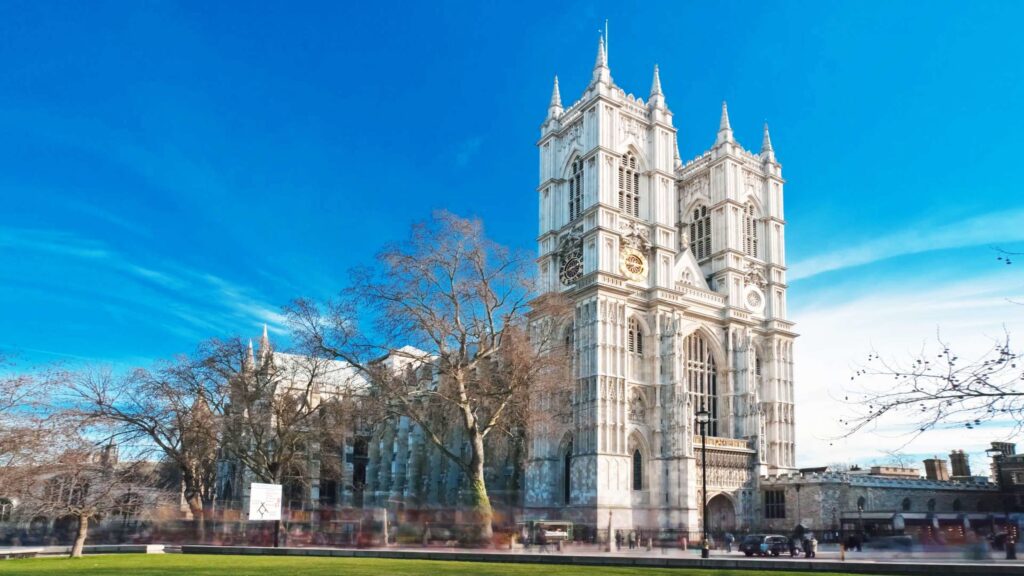
Renaissance
1400-1630
Renaissance in Italy
Renaissance architecture in Italy embodies qualities of harmony, luminosity, and strength, seamlessly blending classical motifs and columns from ancient times. Rather than completely supplanting Gothic or Roman styles, this innovative architectural movement incorporated elements of both old and new ideas. Rooted in a profound interest in various aspects of Ancient times including literature, philosophy, and mathematics, the Renaissance underscored the significance of architecture and urban planning in structuring societies, a fact not lost on the monarchs of the time.
Palazzo Medici Florence
Italian medieval palaces feature a sturdy exterior, while the political and cultural climate thrived during the 15th century. In Florence, a new architectural form, more fitting for the elegant Renaissance era, emerged. Three-story buildings with enclosed courtyards were constructed, strategically placed at prominent locations in the city. Italian Renaissance palaces had larger windows compared to their medieval counterparts, allowing more light to fill the rooms on the upper floors. The enclosed courtyards, both practical and elegant, served as gathering spaces for the family, decorated with exquisite decor. Surrounding the courtyards were arcades of arched bays, supported by columns and consoles. One such famous example is Palazzo Medici in Florence.
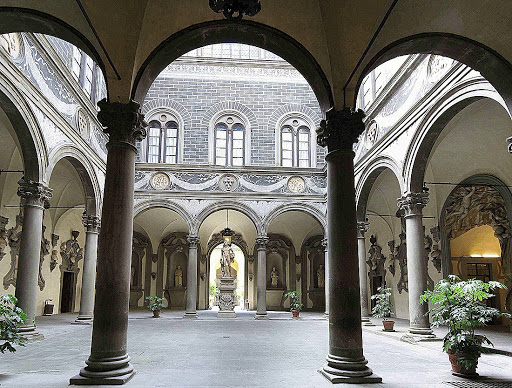
Saint Peter Basilica
Another notable example is the Saint Peter Basilica, situated in Vatican City in Rome. The basilica is renowned as the largest church worldwide. The Basilica exhibits a blend of Renaissance and Baroque architectural styles, showcasing the genius of Michelangelo, a preeminent figure in architectural and engineering circles of the 16th century. Michelangelo incorporated the ideas of past architects rather than disregarding them outright.
The dome of Saint Peter stands as the tallest dome globally, with a slightly smaller internal diameter than the domes of the Pantheon of Ancient Rome and the Florence Cathedral from the early Renaissance. The Church strategically harnessed architecture to manifest its power and sway believers.

Renaissance in France
The influence of Italian Renaissance architecture gradually extended beyond Italy. The popularity of Gothic architecture persisted in France, Spain, and Northern Europe during the 15th century. Travellers played a significant role in disseminating knowledge and generating interest in the new classical ideas of the Renaissance. The French Renaissance, distinct from its Italian counterpart, served as a wellspring of inspiration and innovation. Many structures exhibited a fusion of architectural styles, with stairs assuming greater significance in France compared to Italy. The French established a tradition of spiral staircases during the 15th century.
Château de Chambord Loire
The Château de Chambord Loire serves as an exemplary showcase of distinctive French Renaissance architecture. It seamlessly blends traditional French medieval elements with classical Renaissance structures. While its appearance resembles that of a castle, it doesn’t have any defensive structures. Decorated with towers, an extensive garden, and numerous water features, the château has 440 rooms, 280 fireplaces, and approximately 80 staircases.
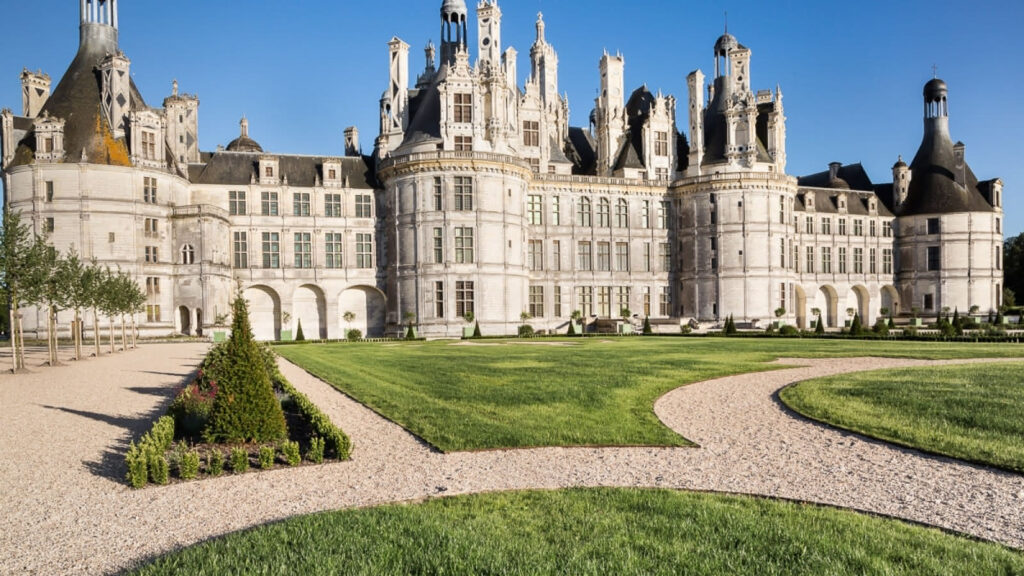
Northern Europe
The Renaissance drew inspiration from the classical forms of Ancient Greece and the Roman Empire. In the northern European countries, it developed its own distinct architectural elements, separate from the Italian version. One notable feature is the ornate façade of private houses, which served as a display of pride and identity. Throughout the 16th century, city halls were reconstructed with a local interpretation of classical motifs, resulting in the creation of impressive public monumental buildings.
City Hall of Antwerp
A notable illustration would be the City Hall of Antwerp, constructed between 1561 and 1565. Cornelis Floris de Vriendt resided in Italy for a few years, incorporating elements of Italian and Flemish Renaissance into the structure. The City Hall served as a model for other public buildings in Vlissingen and The Hague in the Netherlands, as well as various buildings in Germany and Poland.
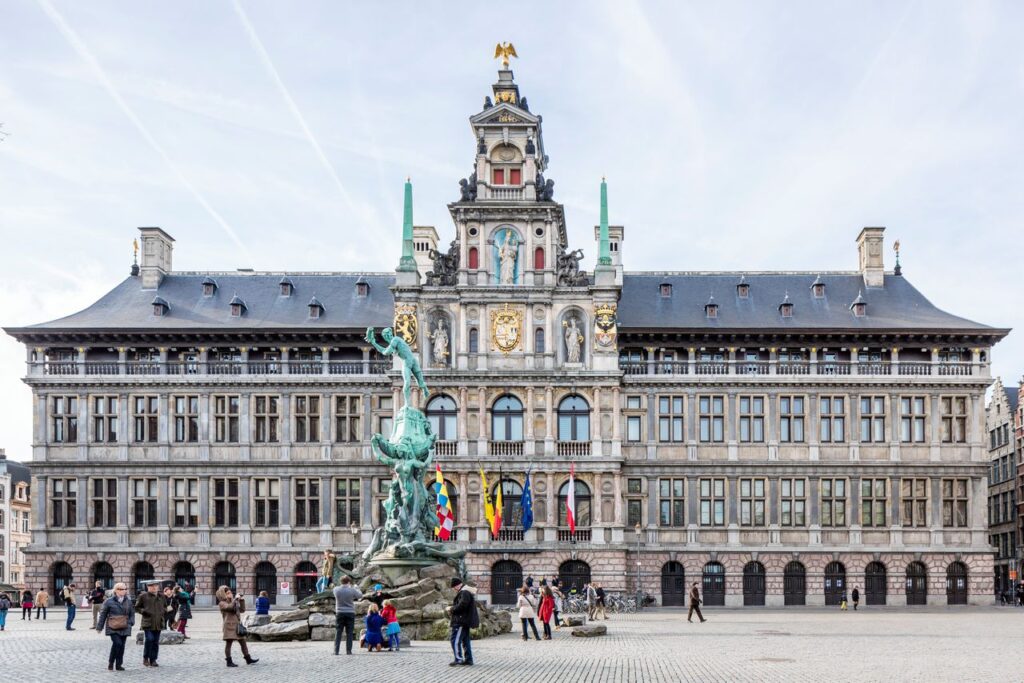
Renaissance in England
England exhibited a preference for the Gothic style until the late 16th century. While the Renaissance influence from various European nations was recognized, Italy’s impact was not directly observed. Instead, the English Renaissance version was influenced by the French and Flemish styles. During the Reformation in England, there were not many commissions for churches or Royal instructions. Conversely, affluent merchants undertook the construction of numerous houses, such as Wollatan Hall.
Wollatan Hall
This country house embodies a harmonious blend of architectural styles, including Tudor, Jacobean, and Elizabethan. The Great Hall at Wollatan showcases exquisite Tudor design. The ground floor ingeniously lacks windows. The design is allowing natural daylight to cascade through the grand Gothic windows from the top floor. The intricate wickerwork glass details are inspired by Dutch designs, as are the wickerwork found at the four corner towers.
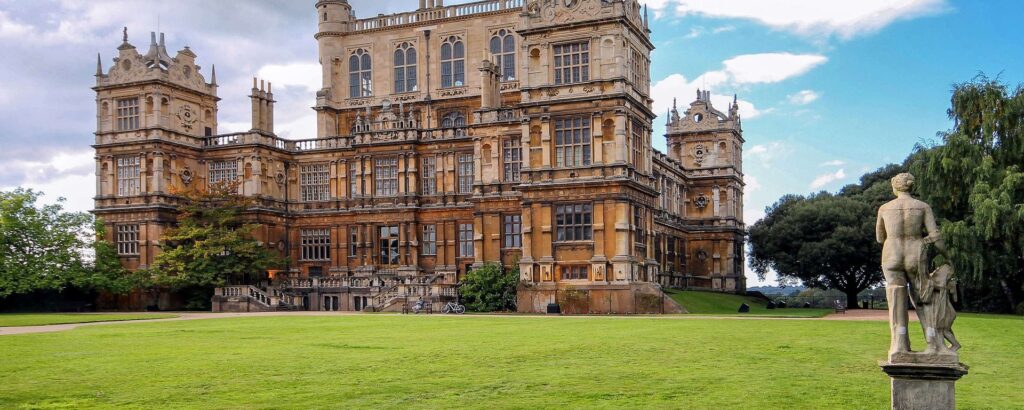
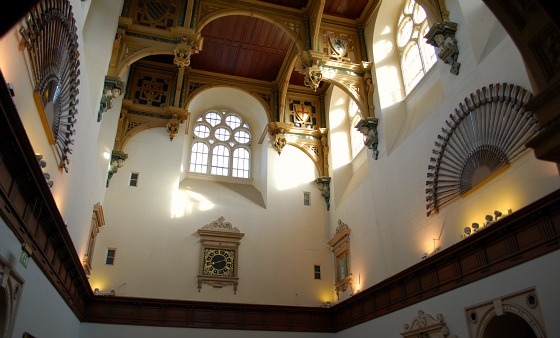
Baroque
1600-1800
Italian baroque
The Italian Baroque originated during the 17th century. It served as an architectural style that exemplified the magnificence of the Catholic Church. The goal was to establish Rome as a prominent Catholic city, and architecture, painting, and sculpture played integral roles in achieving this aspiration. In contrast to the static and intellectual formula of the Renaissance, the Baroque aimed to impress and persuade the faithful followers of the Church.
One distinctive feature of the Baroque style is the cartouche, an oval panel adorned with intricate curled borders. Cartouches found their place on the facades of palaces and churches, not only for decorative purposes but also to frame coats of arms. The city of Vienna stands as an excellent example of Baroque architecture, with its cityscape characterized by numerous magnificent buildings. The monumental highlights of Vienna can largely be attributed to Empress Maria Theresia and Franz Joseph.
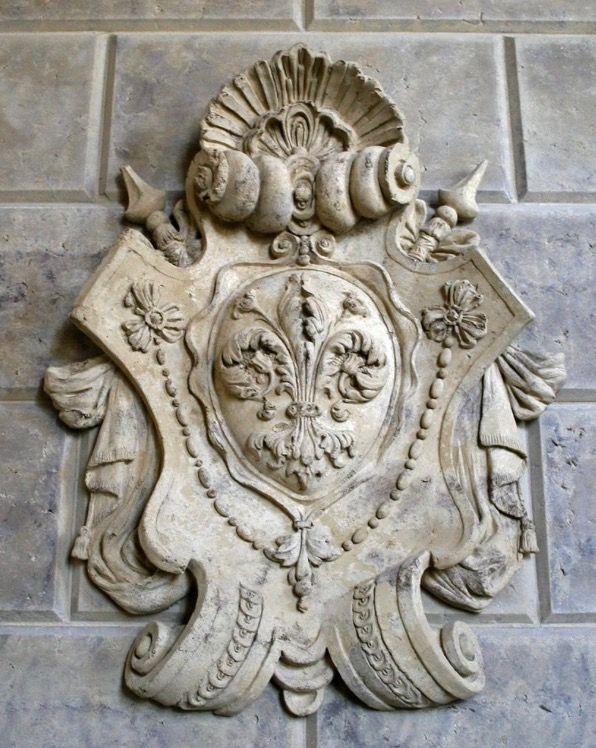
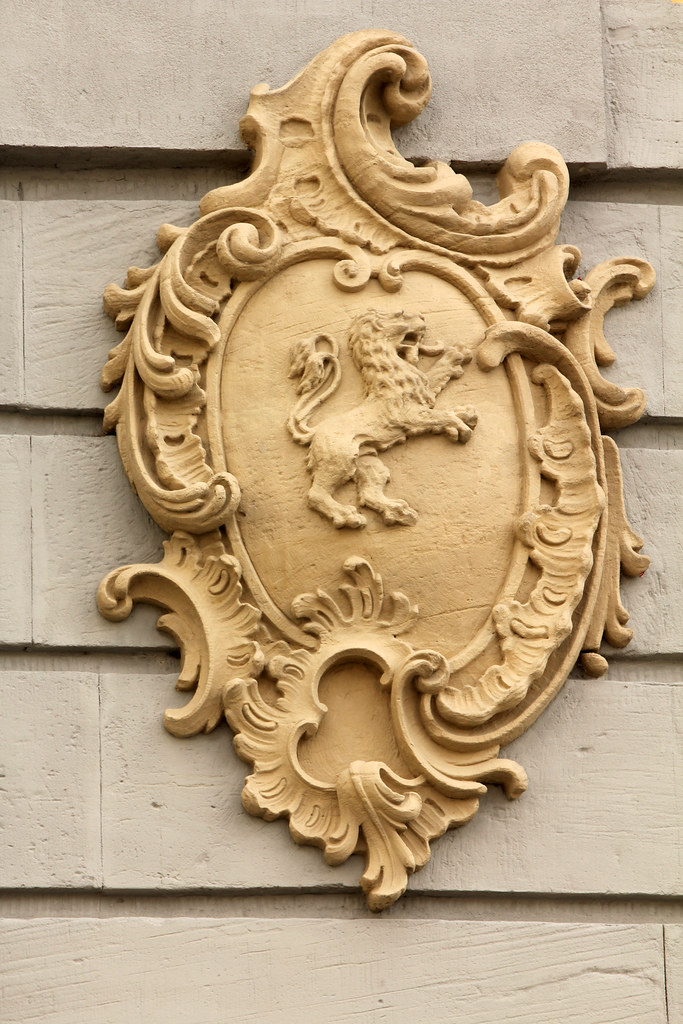
Saint Pieter Square
Gian Lorenzo Bernini was the mastermind behind the design of the colonnades encircling the oval piazza and the covered walkways. Bernini described these colonnades as the embracing arms of the mother, symbolically uniting believers. Another notable baroque feature is the bronze Baldacchino altar in the Saint Peter’s Basilica, positioned above the crypt and tomb of St. Peter, the cornerstone of the Catholic Church. Above the altar, a globe serves as a symbol representing the spread of Christianity.
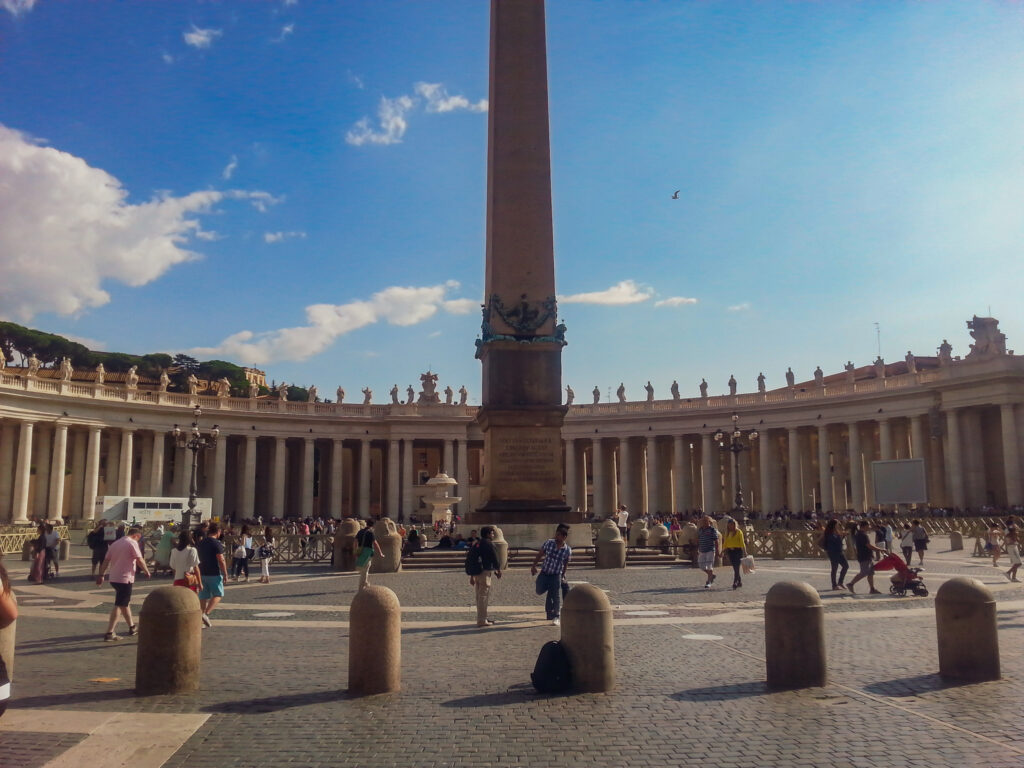
French baroque
In the 17th century, Hendrik IV returned to Paris following the civil war with the aim of reinstating his power and commissioning a network of squares and houses for aristocratic families. Architects constructed extensive facades with recurring motifs, showcasing distinct baroque elements and effects.
A characteristic feature of French baroque architecture is the ornamental console, skillfully shaped into curls or volutes. These elements are primarily used for decorative purposes rather than structural support. Another notable feature is the presence of oval or round oeils-de-boeuf, which can be found throughout Paris, often decorating the summits of baroque buildings. While they occasionally serve as windows, they more commonly serve as decorative openings in the walls.
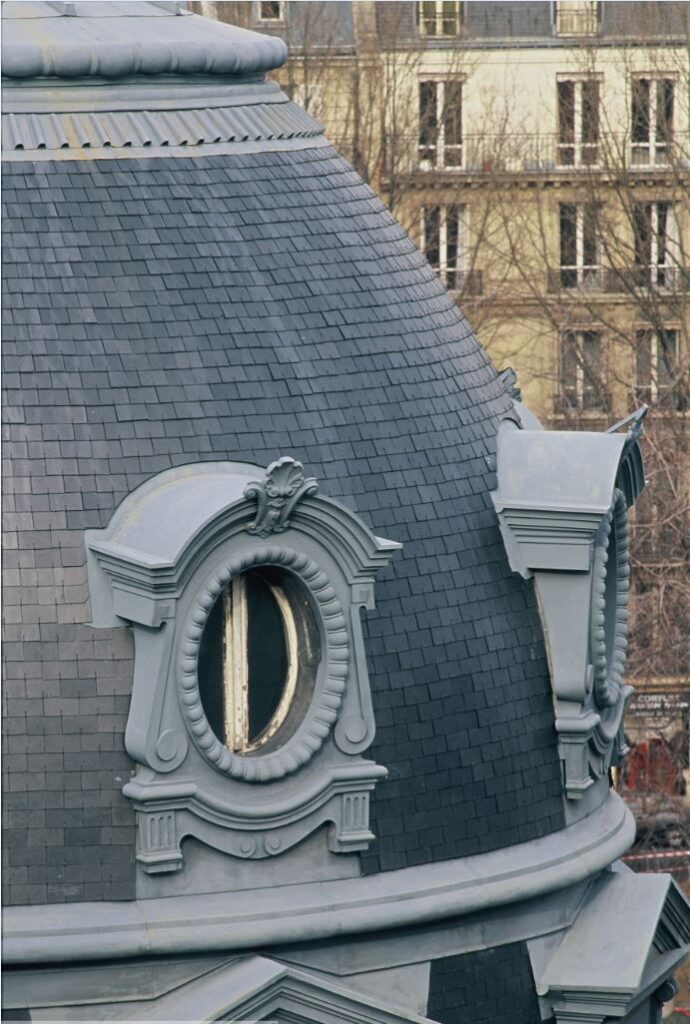
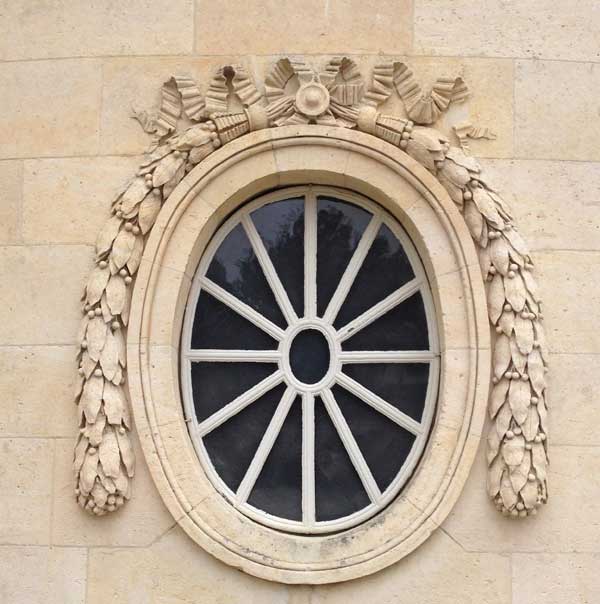
Versailles
Louis XIV commissioned the construction of Versailles in 1664, with the intention of creating a palace that would surpass its predecessors in both size and grandeur. The palace and its gardens were built over several phases throughout the 17th and 18th centuries. Renowned painters and sculptors were invited to contribute to its ambitious decorative design project.
Completed in 1678, the Hall of Mirrors is an impressive chamber with windows overlooking the gardens, while the opposite wall is adorned with Venetian mirrors. These mirrors beautifully reflect the garden scenery, amplifying the interplay of light and opulent interior hues. The Hall of Mirrors set a precedent for subsequent European palace decorations.
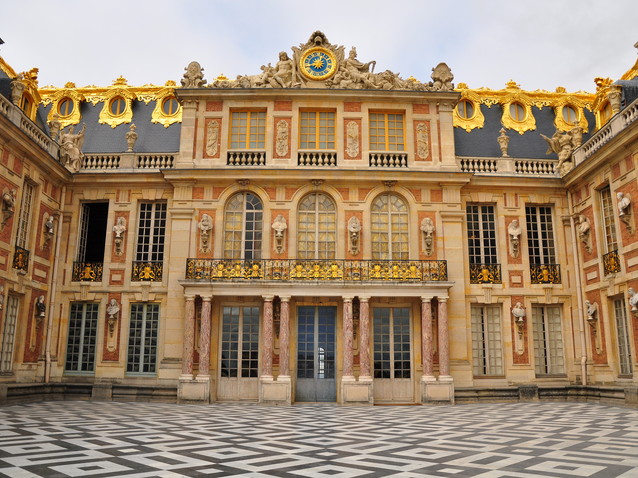
English baroque
The advancement of English architecture during the 17th century was greatly influenced by the significant fire that destroyed London in 1666. A considerable portion of the city was destroyed, including 87 churches. Sir Wren played a significant role in the design and construction of the new churches, employing ingenious and innovative baroque solutions.
Saint Paul’s Cathedral
The reconstruction of Saint Paul’s Cathedral posed a significant challenge for Wern, prompting him to develop multiple plans. When he unveiled his final proposal to the public, their reception was far from positive due to its incorporation of continental baroque style. The west façade of the cathedral boasts prominent baroque elements, including Corinthian columns and intricately decorated towers. One notable feature of Wern’s original design is the unique double-layered dome, which is only visible from the interior.
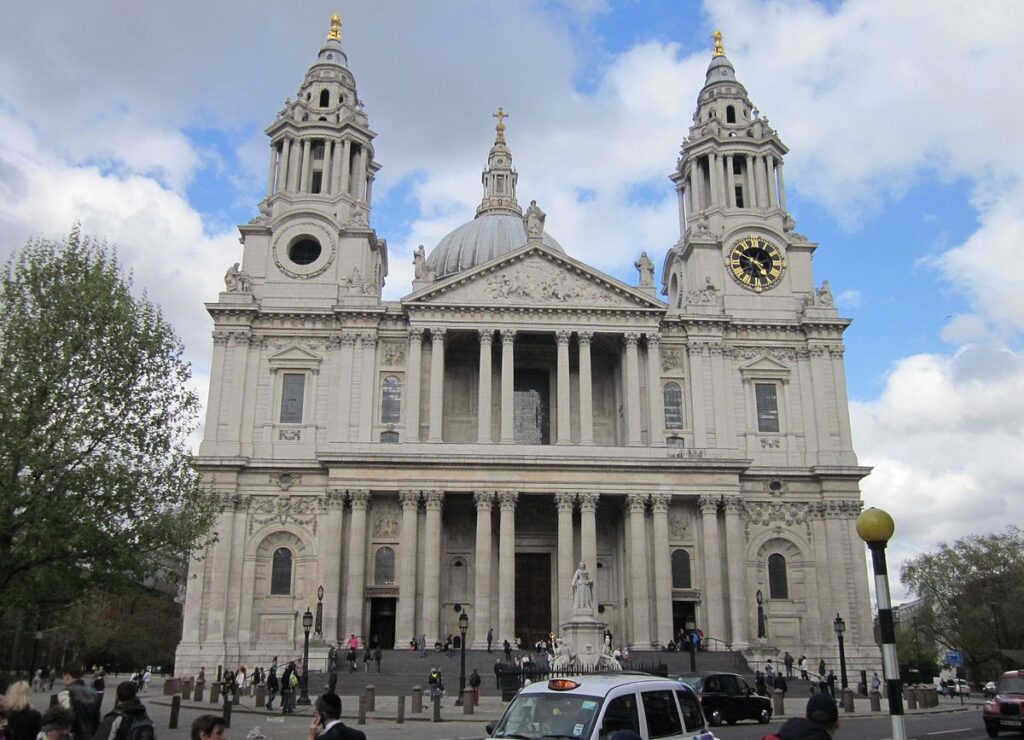
Rococo
1700-1800
The Rococo style does not align with the introductory guide to architecture. Emerging in the early 18th century, Rococo originated as a decorative approach, notably exemplified in the opulent embellishments of Versailles. Primarily utilized in the residences and hotels of affluent Parisian families, the hallmark feature of Rococo is the rocaille pattern, incorporating intricate designs reminiscent of shells, icicles, and cave-like formations. These ornamental patterns typically exhibit abstract and symmetrical forms, complemented by motifs such as rocaille, leaves, curls, and enigmatic figures such as masks and sphinxes.
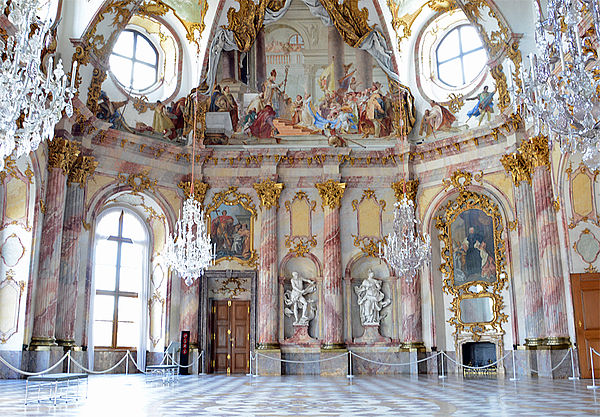
Neoclassicism
1750-1860
Neoclassicism is a multifaceted architectural style encompassing various elements and influences. It emerged as a response to the baroque and rococo movements, with neoclassicists advocating a return to the pure forms of architecture. The term “neoclassicism” has been in use since the late 19th century, although the architectural style itself developed during the 18th century. Neoclassicists favoured the simplicity of ancient Greek architecture, often opting for minimal or no decoration. Rather than introducing new architectural forms, neoclassicism primarily repurposed existing elements, drawing heavily from classical architecture.
England
The Greek revival represents a nuanced layer of Greek architecture, wherein select components of buildings were repurposed to inspire new styles. A striking instance of the Greek revival style can be seen in the west façade of Saint Pancras church. This 18th century church blends a basic form with a temple façade and a Gothic tower, while faithfully replicating Ancient Greek columns. The British Museum in London is a notable example. The classical styles showcased throughout the museum harmonize with the scale and magnificence of 19th century public structures in England. The British Museum’s impressive line of ionic columns is a reverence to the temple Polias in Priene, Greece.
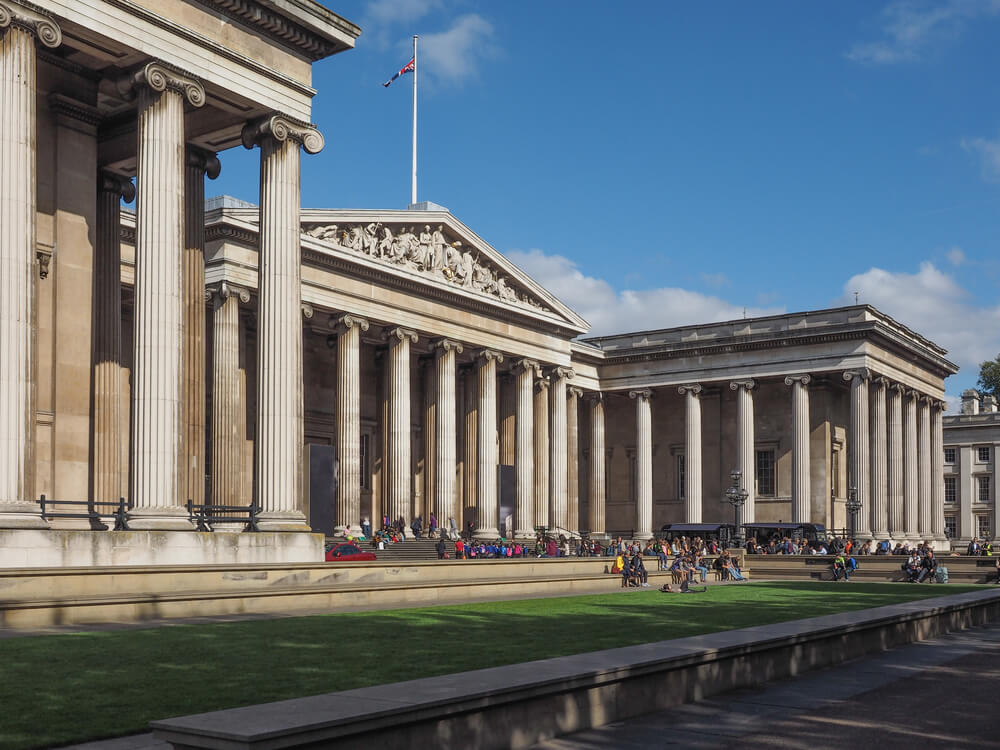
United States
The neo-classicist movement in the US was strongly linked to the political status of the new republic. One of the most influential presidents was Thomas Jefferson. He was an amateur architect and travelled a lot in Europe. He noticed that the neoclassic style was perfect for government buildings in the US.
A well-known example is the Capitol in Washington. After a fire in 1814 the Capitol needed to be re-build. They designed new columns based on important agriculture products like tobacco leaves, corn cob and corn leaves. The columns at the entrance of the Senate have these new designed columns. It is a tribute to the agricultural heritage of the United States. Not only does it stand for the importance of agriculture in America’s history, but also as a reminder that it is still important today. This shows how architecture can be used to show respect and honour certain aspects of culture or history.

Monumental highlights in Italy
Come and explore the irresistible charm of Italy’s rich historical sites! Take a journey through the monumental highlights of Bologna, one of the most underrated cities in the country. Its history dates back to the Renaissance period, offering an unforgettable cultural and historical experience. And let’s not forget about Modena, a hidden gem where you can escape the crowds and indulge in its unique allure.
When in Rome, you have an incredible opportunity to delve into the captivating history of the Roman Empire. Florence is the capital of Tuscany. Let me tell you, it’s one of the most fascinating destinations in Italy! You’ve got art, architecture, and history all bundled up in this magnificent city. Have you heard about the stunning Duomo and the amazing art collection at the Uffizi Gallery? Trust me, there’s so much to see and explore! In my latest blog post, I’ll be your guide to the most monumental highlights you shouldn’t miss in Florence. Let’s dive in!
And if you fancy a scenic hike with breathtaking views of pristine blue waters, Cinque Terre is the place to be! Discover its history, architecture and culture of this natural wonder in Italy.
Discover the charm of Pisa, Italy. The city is famous for the iconic Leaning Tower. Explore the best monumental highlights and immerse yourself in unique architectural masterpieces, fascinating history, and local culture. Plan your trip to Pisa and make unforgettable memories!



This Post Has 8 Comments
Wow, some interesting facts here!
Hola Mrs D,
Yes, there are. While doing research I learned more about the various styles as well.
Xx Adriana
Wat wat een indrukwekkend artikel. Complimenten xxx
Hola Anita,
Thank you for the nice compliment.
Adriana
Italy and Greece have very good architectural Place…Thanks for Sharing ❤️
You are welcome.
Adriana
Italy and Greece have very good architectural Place…❤️
Both are amazing travel destinations and have rich historical architecture.
Adriana